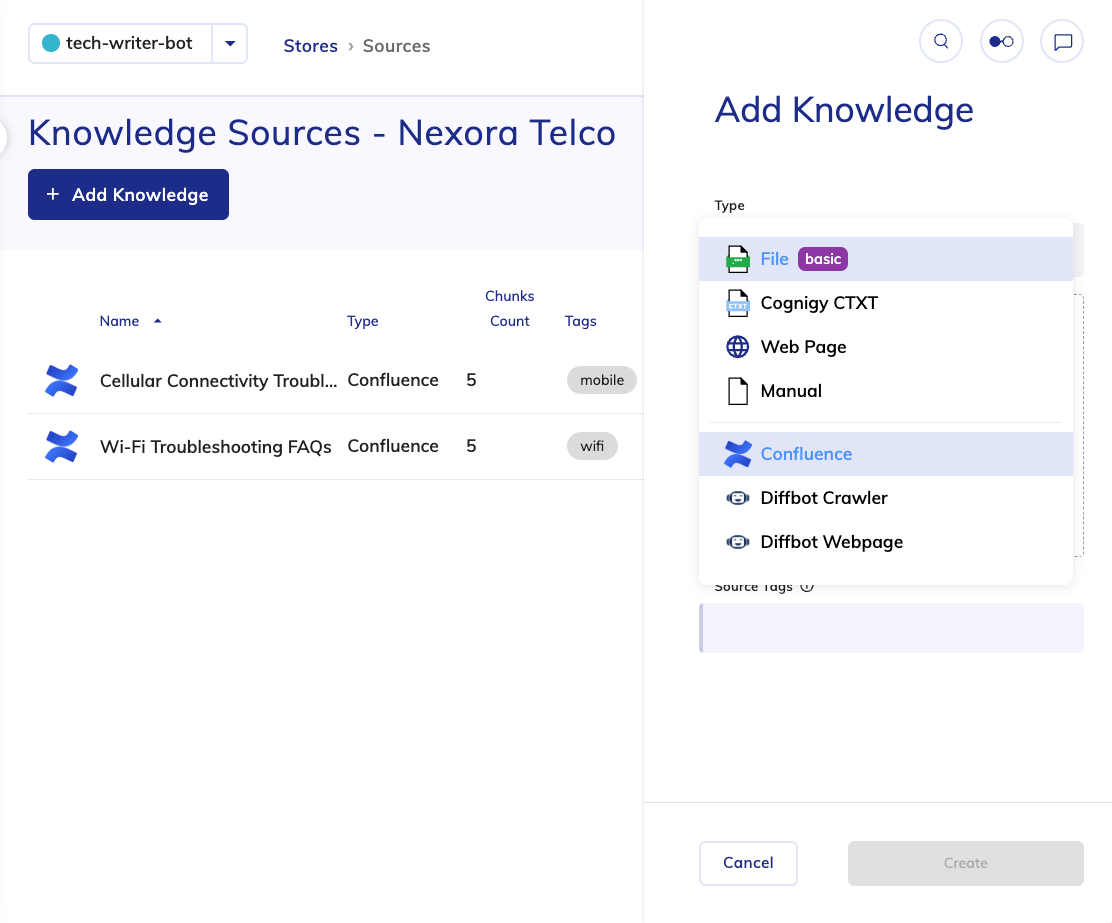The 2025.21 release of Cognigy.AI brings a powerful enhancement to Knowledge AI with the introduction of Knowledge Connectors - a streamlined way to ingest data from your enterprise’s internal wikis and content repositories.
Streamlined Integration with Enterprise Knowledge Systems
Cognigy Knowledge AI enables you to ground AI Agents in reliable, verified knowledge sources, ensuring controlled behavior and minimizing hallucination risks. In practice, that means your AI Agents often need to access, interpret, and act on enterprise knowledge hubs like document libraries, wiki systems, internal databases, etc.
Why It Matters
While Knowledge AI already supports URL scraping and a variety of file formats, working with such content repositories used to require custom ingestion scripts, manual uploads, or duplicated maintenance work.
Knowledge Connectors address this challenge by introducing a standardized, reusable, and scalable way to integrate your preferred content systems directly into the Cognigy Knowledge AI pipeline. Prebuilt connectors can be instantly downloaded from the Marketplace to accelerate deployment, or you can easily create bespoke connectors using our Extension framework.
Key Benefits
- Automated Ingestion: Quickly ingest data from databases, APIs, document libraries, Confluence, or crawl websites with Diffbot – removing manual uploads.
- Customizable and Extensible: Flexibly modify existing connectors or build and deploy your own to support any third-party and custom systems.
- Easier Management: Maintain all knowledge centrally in the tool you’re already using, and lower the overhead of managing your knowledge layer.
Future releases will expand on Knowledge Connectors with additional features and improvements.
Other Improvements:
Cognigy.AI
- Allowed arbitrary custom URLs for Azure OpenAI LLMs, so the URL is no longer restricted to Azure OpenAI’s domain
Cognigy Voice Gateway
- Removed the
CALL_RECONNECTEDevent, which was previously sent to the Flow after a WebSocket reconnection. This change prevents it from registering as user input and causing unintended behavior
For further information, check out our complete Release Notes here.




.png?width=60&height=60&name=AI%20Copilot%20logo%20(mega%20menu).png)


-3.png?length=370&name=blog%20-%20main%20(1)-3.png)

